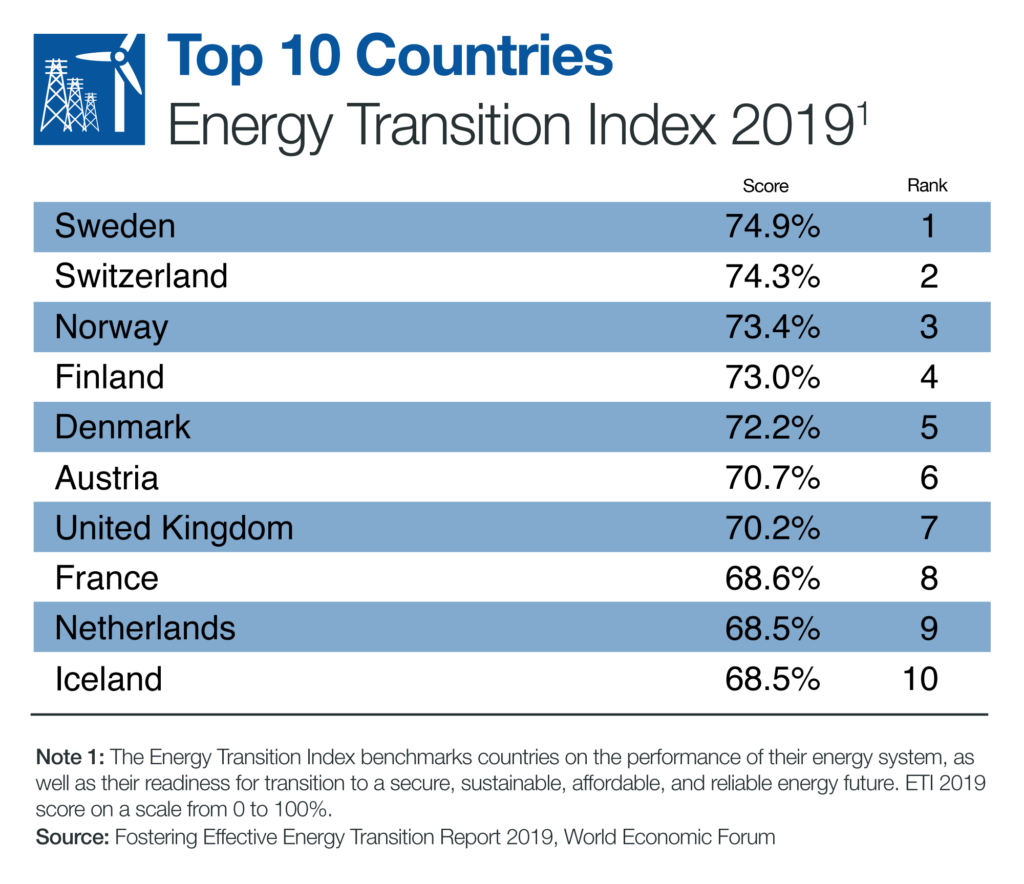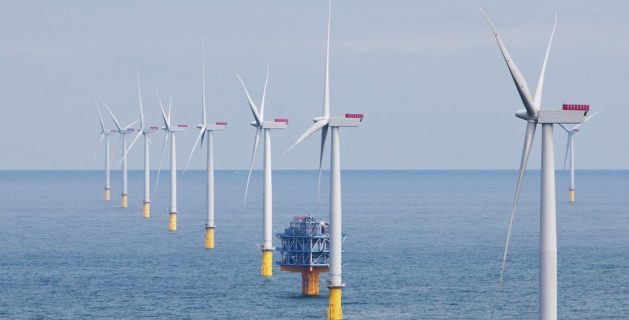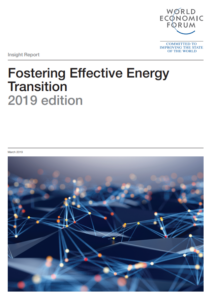Sweden ranks at the top of the ten countries reported to be the most ready for energy transition, according to World Economic Forum’s Energy Transition Index (ETI), comparing the energy sectors of 115 countries and analyzing their readiness for energy transition. The index is included in the latest edition of WEF’s Fostering Effective Energy Transition report.
Namely, the document summarizes the findings from the second edition of the ETI, covering 40 indicators from 115 countries. Countries from Western and Northern Europe continue to lead the rankings. Sweden retains the top spot from last year, followed by Switzerland and Norway.
The top 10 countries are diverse in their primary energy mix, energy system structure and natural resource endowments, which indicates the importance of country-specific circumstances in energy transition planning.
However, a strong enabling environment is a common thread among top-ranked countries, evidenced by high scores on the transition readiness component. Laggards have poor energy system performance and transition readiness because of weak regulatory frameworks, lack of policy stability, ongoing geopolitical conflicts or strong path dependency from fossil fuel-powered energy systems.

The report finds that energy transition has slowed globally. The year-on-year increase of the global average score on the Energy Transition Index was the lowest of the last five years. Three years after the global milestone of political commitment through the Paris Agreement, this lack of progress provides a reality check on the adequacy of ongoing efforts and the scale of the challenge.
Key highlights
- Advanced Economies rank high on the ETI, but still face the challenge of balancing economic growth and environmental sustainability. The rate of decline of the average energy intensity of Advanced Economies slowed in 2017, with no significant improvement in the average carbon intensity of primary energy supply and per capita carbon emissions.
- Strong economic growth, urbanization and improving living standards are important factors driving the growth of energy demand in Emerging and Developing Asia. Coal maintains a significant share of the energy mix. Navigating the balance between growing the economy, meeting rising demand and improving environmental sustainability represents the key challenge for energy transition in this region.
- Apart from persistent gaps on universal access to electricity and clean cooking fuels in Sub‑Saharan Africa, affordability and reliability of power supply are important challenges. A strong regulatory framework, policy stability and effective governance are essential to attract investment in capacity expansion and modernization, and to reap the economic dividends from the region’s natural resource endowments.
- The Latin America and the Caribbean region has the highest environmental sustainability score among all peer groups due to large hydroelectric capacity and rapid progress made on installing renewable sources of electricity. With these characteristics, electrification of transport could unlock further improvement in environmental sustainability.
- Energy transition in the Middle East and North Africa region requires that economies transform structurally so that gross domestic product does not have to rely as much on exports of fossil fuel. Diversifying the fuel mix, developing human capital for the future energy system and reducing fossil fuel subsidies are essential for an effective energy transition in this region.
Meanwhile, accelerating the energy transition will require coordinated action across economic, technological and sociopolitical systems:
- Energy–economy system: Economic growth in modern economies is closely associated with increasing energy consumption. Decoupling energy consumption from economic growth will require economic diversification to less energy-intensive industry sectors, energy efficiency in production processes and increased cooperation between developed and developing countries for technology transfer and capacity building.
- Energy–technology system: A wider toolkit of low-carbon technologies needs to be developed for widespread commercialization. Moreover, to keep up with society’s requirement, this needs to be done at a faster pace. Policies and incentives for research and development, as well as an entrepreneurial environment, are essential to deploy new technologies more quickly. Overcoming technology lock-ins from legacy systems will require redesigning institutions and engaging consumers to ease adoption of new technologies.
- Energy–society system: Disruptive unintended consequences, such as distribution of the cost of energy transition in society, livelihood concerns of communities that depend on fossil fuel extraction or conversion, and stranded infrastructure will need to be managed to ensure equity of energy transition.
Accelerating energy transition will require faster progress on all fronts, including research on and deploying technology, large amounts of investment, consumer participation, and formulating and implementing policy. Given the scale and complexity of energy transition, and its interdependencies across different systems, no stakeholder group can unilaterally achieve faster and more impactful progress. Long-term roadmaps informed by a transparent fact base, reflecting country-specific circumstances and addressing interdependencies of energy transition with different parts of the society and economy, are required for an effective energy transition.
Explore more herebelow:


































































